Things seem to be going quite well for Jaguar all of a sudden, don’t they?
Well enough that we might even risk a hostage to fortune: a hope for the future. Here’s mine. That in five, 10 or even 25 years’ time – once the model catalogue is more fully fleshed out, the balance sheet is handsomely repaying Tata’s investment and this great British brand is finally selling enough cars that any talk of its dreaded ‘untapped potential’ becomes a thing of the past – someone in long trousers has the good sense to say: “Enough. That’ll do. We’ve made it, everyone. This is what success looks like for us.”
See what we make of this second generation Jaguar XF saloon
God knows how many cars the firm needs to shift annually to reach that point. I’d say a lot more than it does now but significantly fewer than any of the German manufacturers with which it’s routinely compared.
The key thing is that Jaguar isn’t a typical premium automotive brand. In my book, it’s something of a minority-interest car maker – and long may it continue to be. It serves the interests of keen drivers looking for handsome, desirable, real-world driver’s cars tuned a bit differently from the Bavarian bunch. It does not, and need not, serve those looking first and foremost for engineering monoliths, 150mph office cubicles, car park status symbols, lifestyle machines or any other concept currently used to part global middle classes from their hard-earned.
There, I can get off the soapbox. Now to this week’s good news: evidence that Jaguar understands all of the above, coming in the shape of the new Jaguar XF.
It’s a measure of the historic significance of 2015 for Jaguar that it can roll out a replacement for the car that effectively turned around its fortunes eight years ago and almost no one seems to notice. The reason is because the XF represents Jaguar doing something it has hardly needed to do at all over the past decade: consolidate.
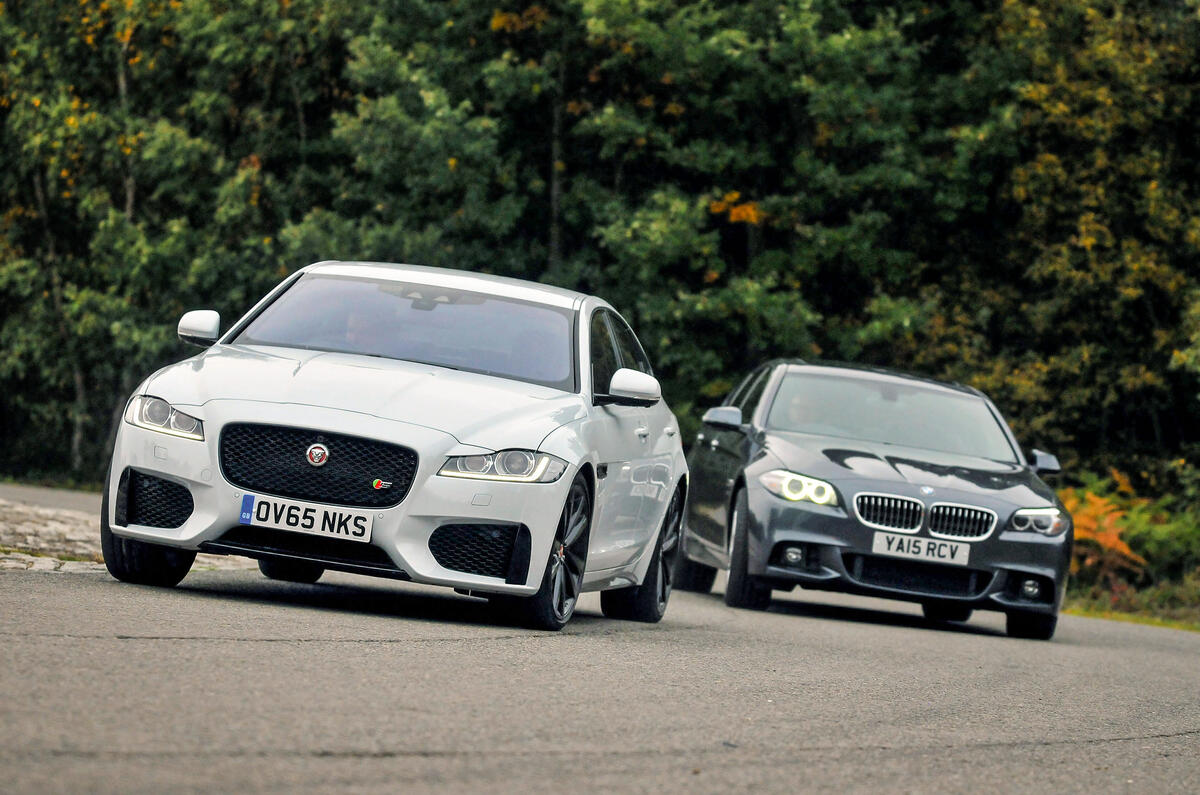
Under the skin, the XF is all new. Inheriting the aluminium-rich modular platform, Integral Link rear suspension, Ingenium four-cylinder diesel engines and electromechanical power steering of the smaller Jaguar XE, the car is longer of wheelbase and cabin but shorter overall than its mostly steel predecessor. Significantly lighter, more aerodynamically efficient and more economical, it has the makings of a much-altered car.
And yet it isn’t: not to drive, and not in so many other ways, either, all of which we’ll come to. Jaguar has had the confidence to use transformative technology in a discreet and non-transformative way with this car. To say: “We like the niche we’ve carved out for ourselves here, and we hope you do, too. So we’re sticking with it.”
That impression becomes unmistakable when you line up the new XF against one of its key competitors and, bit by bit, weigh up what it does well against the not so well. Our first opportunity to do that has come in the contrasting shapes of the Jaguar in headline diesel 3.0d S form and the BMW 530d, the long-time preferred choice of the upwardly mobile business set willing to pay for extra performance and prestige.
There is clear substance to Jaguar’s claim to have brought the XF right onto the pace for performance, fuel economy and all-important CO2 emissions. The most frugal four-cylinder diesel versions of the car undercut their rivals from Audi, BMW and Mercedes-Benz on CO2. And whereas the more powerful diesel versions of the XF used to be a country mile off the standard set by other six-cylinder models, this one is different. The 3.0d S matches our 530d M Sport precisely on paper for claimed fuel economy, CO2 and the 0-62mph sprint. These are things clear-thinking business types are likely to consider before getting anywhere near a showroom.
As is price, an area where the BMW has a huge advantage. More than £5000 separates the list prices of our cars. That difference may narrow a bit for plenty of customers when they consider that the Jaguar is slightly better equipped than the BMW, but residual values will do nothing to mitigate for the Jaguar via the improvement of monthly lease costs. Our sources at CAP expect both cars to retain 48% of their list price over three years and 30,000 miles.
In the metal, there is better news for Jaguar. Superior packaging has addressed one of the old XF’s major failings, because although the car used to be almost the longest saloon in its class, it also used to be about the least spacious.
The new one is at once shorter and more roomy, although it is still not a car likely to sell on its accommodation levels.
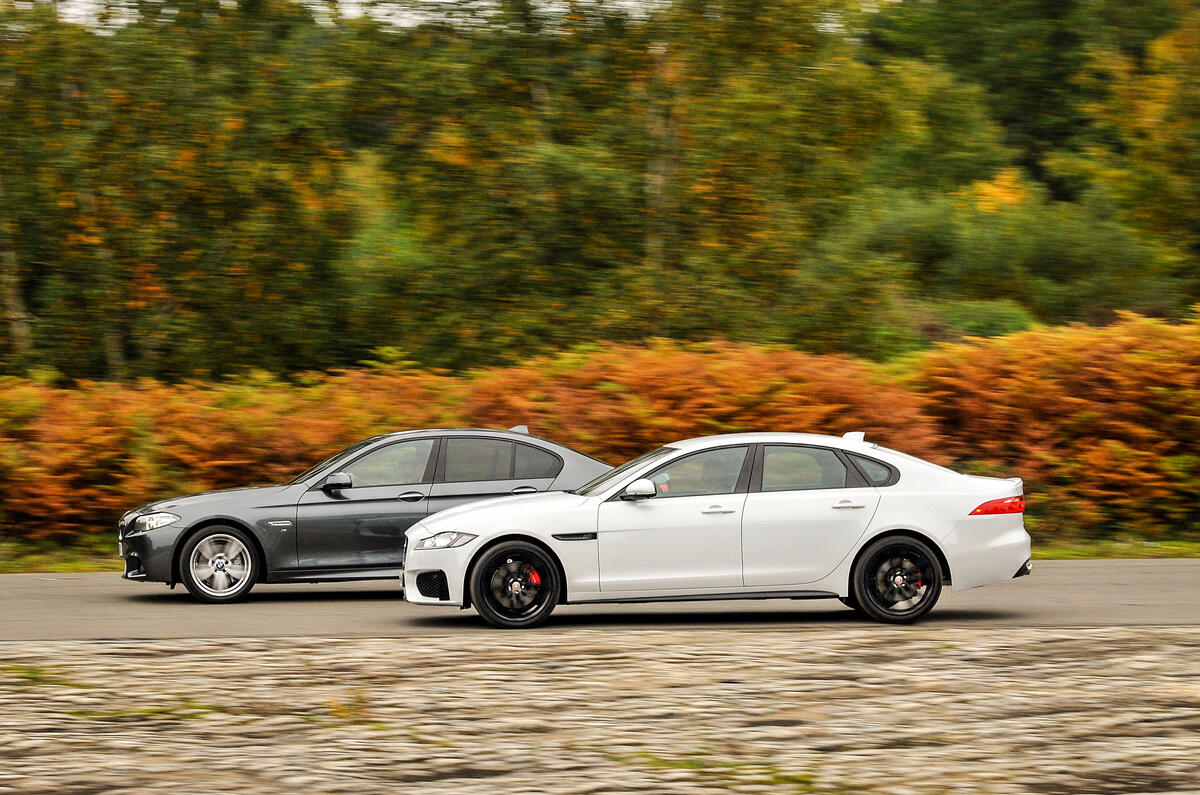
The 530d, although shorter still, is even bigger inside. The BMW’s cabin – less rich and enticing than the Jaguar’s, but still more solid-feeling – is wider and longer and offers a little more head room in both rows. The BMW’s seats are broader, more adjustable and more supportive. So the 5 Series is a better ‘big saloon’ in all respects, if big is what you want. And I’m not sure XF drivers do.
In the XF, the driver trades outright space for a sense of cradled closeness at the wheel. Although the cars’ driving positions are very similar, the Jaguar’s door console, centre tunnel and roof feel closer to your extremities. The back seats are now no embarrassment and roomy enough for two big adults, mainly thanks to a recess carved out of the roof panelling. But the BMW’s back seats are notably bigger still and its boot is both longer and deeper.
A new fuel injection system and new turbochargers conjure significant power and torque improvements from the Jaguar’s V6 diesel and will doubtless convince some that the six-pot XF is a closer rival for the 535d than the model we’ve pitched it against here. However, on the road, the 530d’s engine is easily a match for the XF’s.
On mechanical refinement and flexibility, it’s honours even. The Jaguar V6 is better isolated at idle and low revs but also marginally more crotchety and less free-revving than the BMW straight six at high revs. Although the Jaguar feels stronger at times because of its greater mid-range torque, the BMW’s engine and gearbox are more responsive, so there’s nothing between the cars in terms of real-world pace, either.
Overall – albeit by only a nose – the BMW’s powertrain shades the contest, despite giving up so much on peak power and torque. Expect a 535d, then, to feel like a hot rod in comparison with the XF – just as it does next to every rival bar, perhaps, Audi’s 3.0-litre BiTDi Audi A6 and Audi A7.
Does this make the 5 Series the default driver’s choice that it always used to be, at the richer end of the diesel executive saloon spectrum? Perhaps for some it will. But frankly, even if you have only a passing, matter-of-fact regard for dynamic sophistication and driver appeal, I think you’d recognise that one of these cars is outstanding to drive and the other one only very good.
The XF has the 5 Series totally beaten for ride and handling. It’s more supple, compliant and quiet riding, both on the motorway and at B-road speeds, more progressively and deftly controlled in its vertical and lateral body movements, more agile and responsive through corners and much more tactile and communicative through its steering wheel. That the Jaguar comes with adaptive damping as standard and the BMW doesn’t (our test car did without it) helps to explain how such a striking advantage should be conjured for the XF on breadth of dynamic ability. But it can’t excuse it.
Whereas the 530d’s steering feels dull and heavy, the XF’s is incisive and bright. The pace and heft of the BMW’s steering makes it a car you have to muscle into corners, whereas the Jaguar feels more delicate, lithe and precise on its way to an apex. The XF’s steering also loads up beautifully as cornering forces build and returns to centre with natural weight.
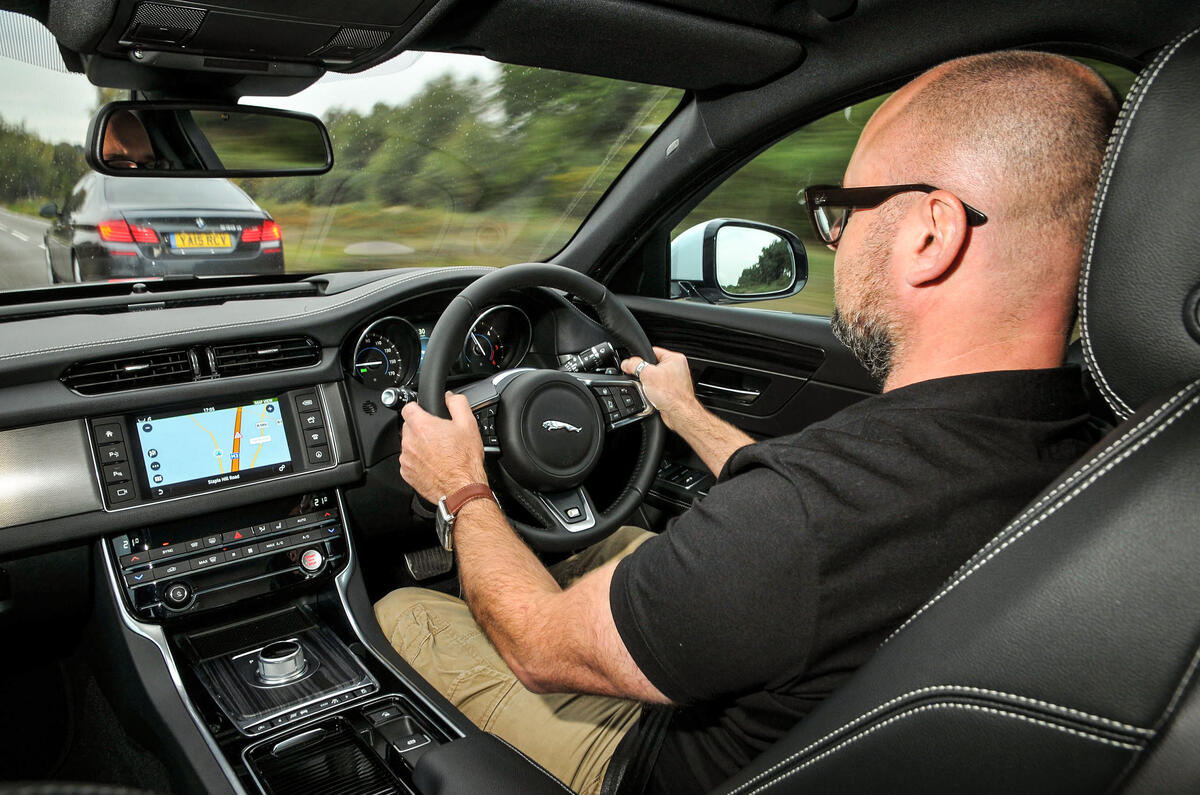
Handling balance is an asset for both cars, with abundant torque, excellent throttle response and skilfully set grip levels allowing you to involve the rear axle in the cornering conversation whenever you like. But the Jaguar’s better damping and more dexterous wheel control make for a more consistent grip level and allow you to adjust its line more minutely.
The XF feels like a natural athlete, suffusing even its everyday motorway gait with a flavour of its softly sprung, effortless brilliance, and it makes the 5 Series feel like a journeyman – a gifted amateur, perhaps – with a practised but not nearly so polished routine.
Which brings us neatly back to where we started. Although it has been through a huge technical change, the XF hasn’t really changed much at all. It clearly wasn’t meant to – and that’s welcome news. The previous version spent most of its life at the top of our mid-size executive class rankings, thanks to a blend of natural, communicative, involving handling and a suppleness of ride that always served it well on UK roads – and that, for keen drivers, ultimately made its relatively inefficient engines and second-rate cabin space worth tolerating.
The new XF has yet to be fully exposed to the Autocar road test, but when it is, I fully expect it to return to its old perch at the top of our executive pile, thanks to even more distinguishing ride and handling, much more competitive engines and better practicality.
I’m not sure I can see how it could do anything but – not in this magazine, at least. Nor, more important, can I think of a single thing that Jaguar should have done differently with this car, rather than just done better. There’s still room for improvement here and there, in the details: the somewhat fiddly touchscreen infotainment system, the material quality and elsewhere. But Jaguar can perfect details over time, knowing that it has nailed the underlying positioning and broader-brush execution of the XF more sweetly than ever.
Here’s to the power of consolidation.
Read Autocar's previous comparison - Porsche Cayman GT4 versus Honda NSX and Ferrari F355
Jaguar XF 3.0d S
Price £49,950; 0-62mph 5.8sec; Top speed 155mph; Economy 51.4mpg; CO2 144g/km; Kerb weight 1750kg; Engine V6, 2993cc, twin-turbo, diesel; Power 296bhp at 4000rpm; Torque 516lb ft at 2000rpm; Gearbox 8-spd automatic
BMW 530d M Sport auto
Price £44,465; 0-62mph 5.8sec; Top speed 155mph; Economy 51.4mpg; CO2 144g/km; Kerb weight 1785kg; Engine 6 cyls in line, 2993cc, twin-turbo, diesel; Power 255bhp at 4000rpm; Torque 398lb ft at 1500rpm; Gearbox 8-spd automatic
Get the latest car news, reviews and galleries from Autocar direct to your inbox every week. Enter your email address below:

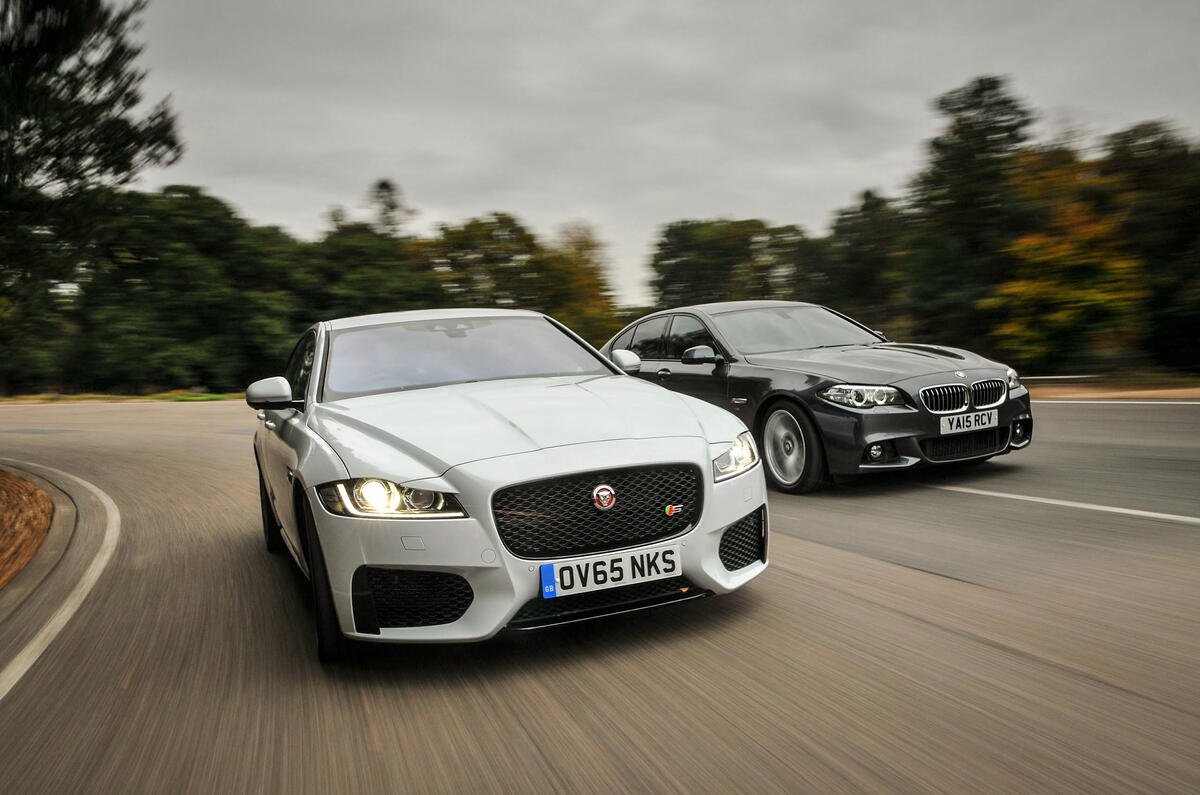
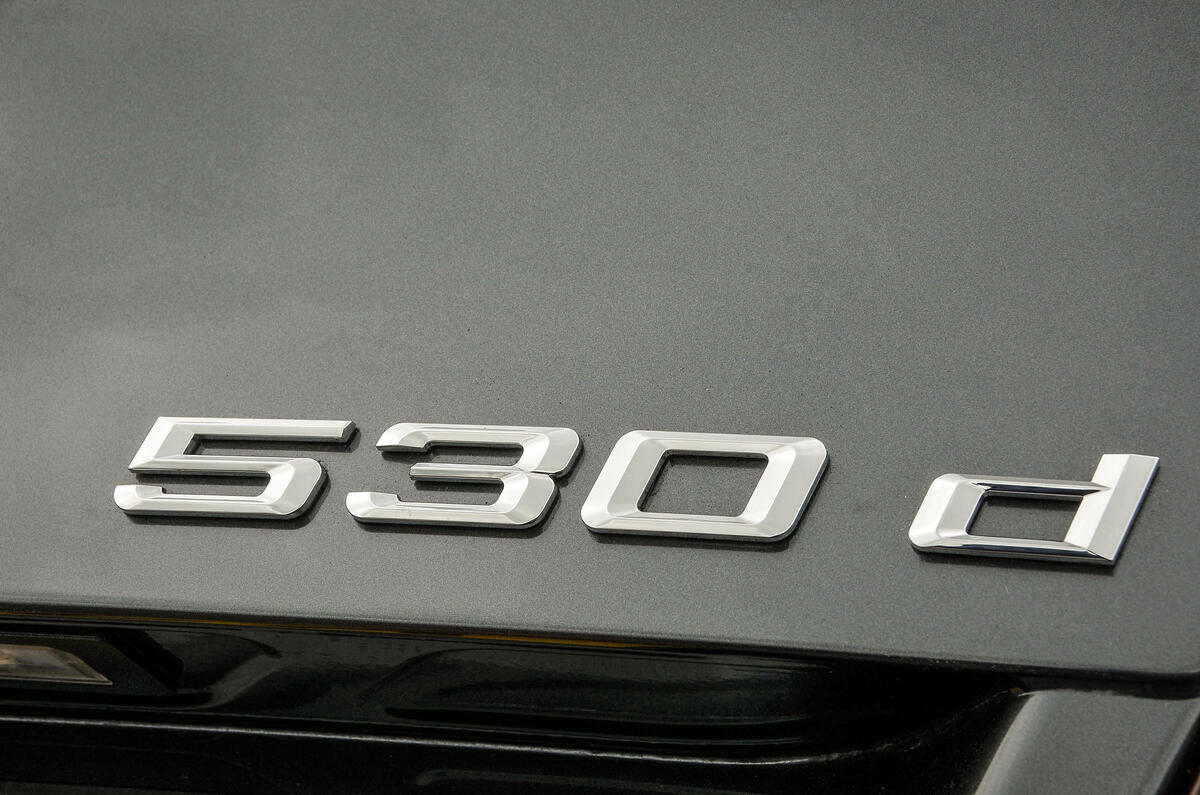
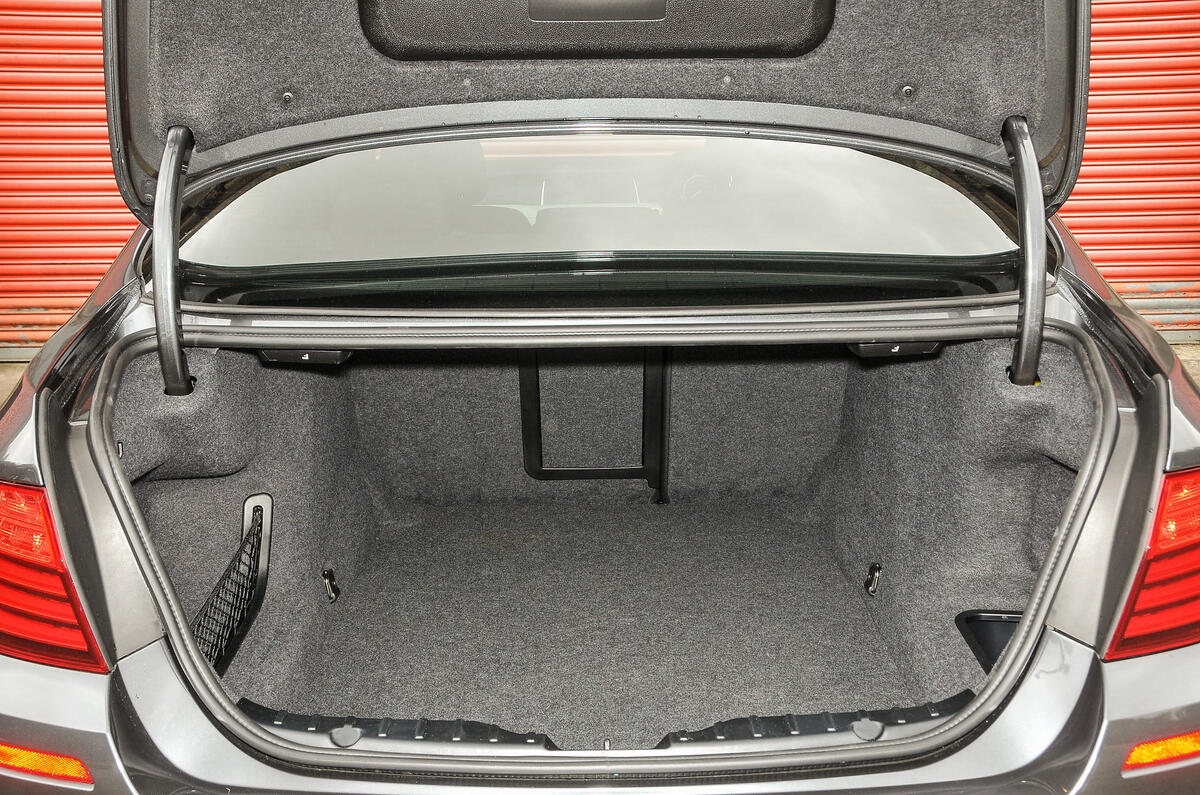
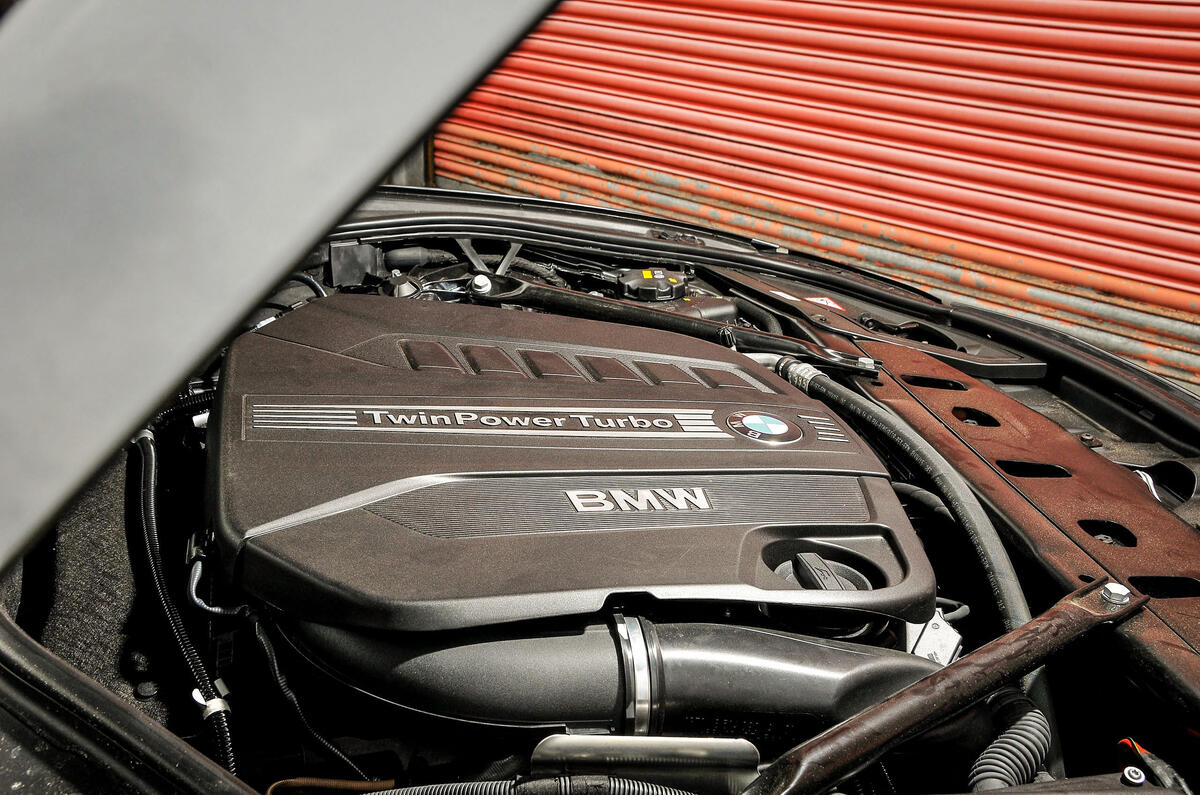
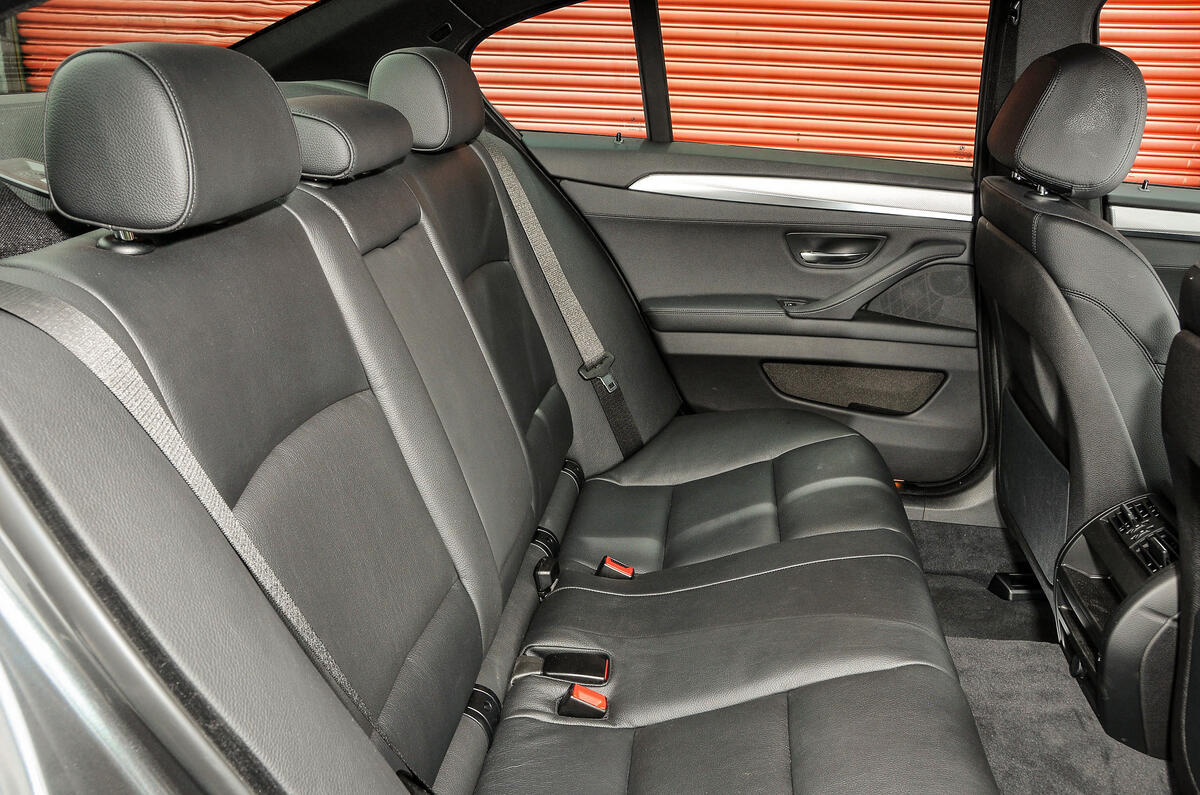
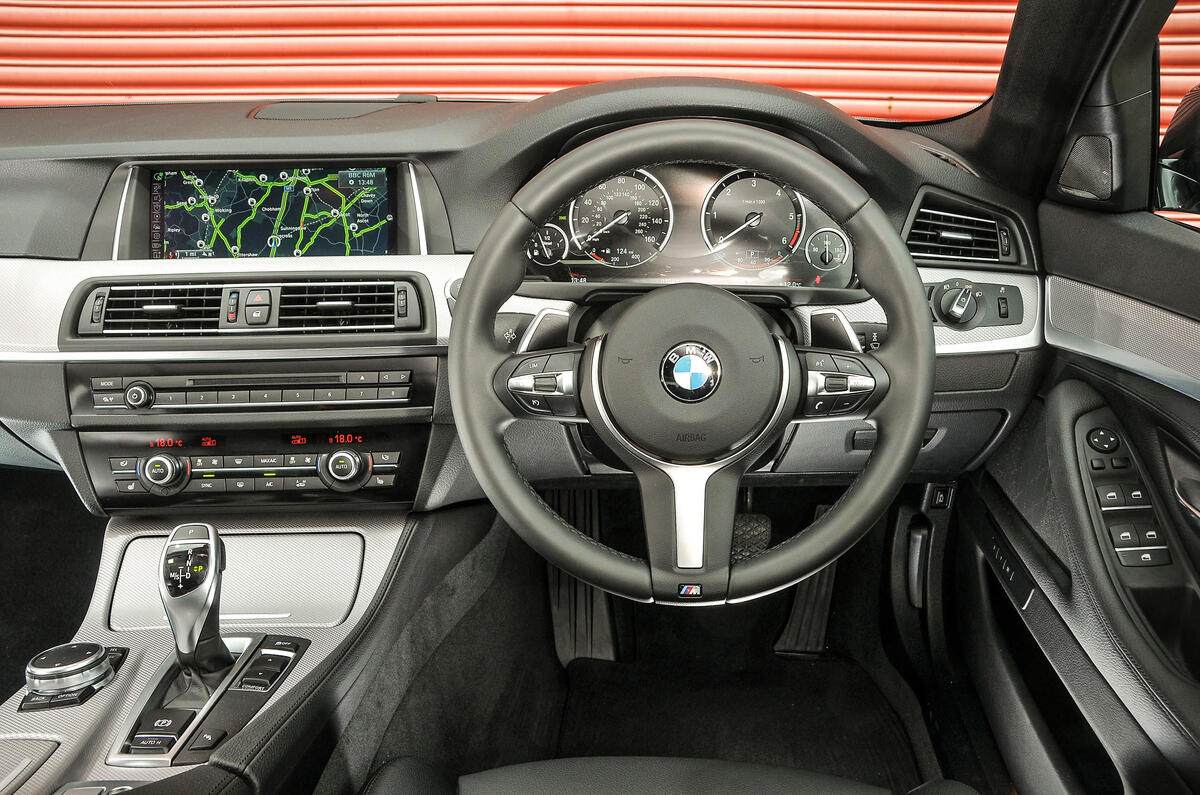
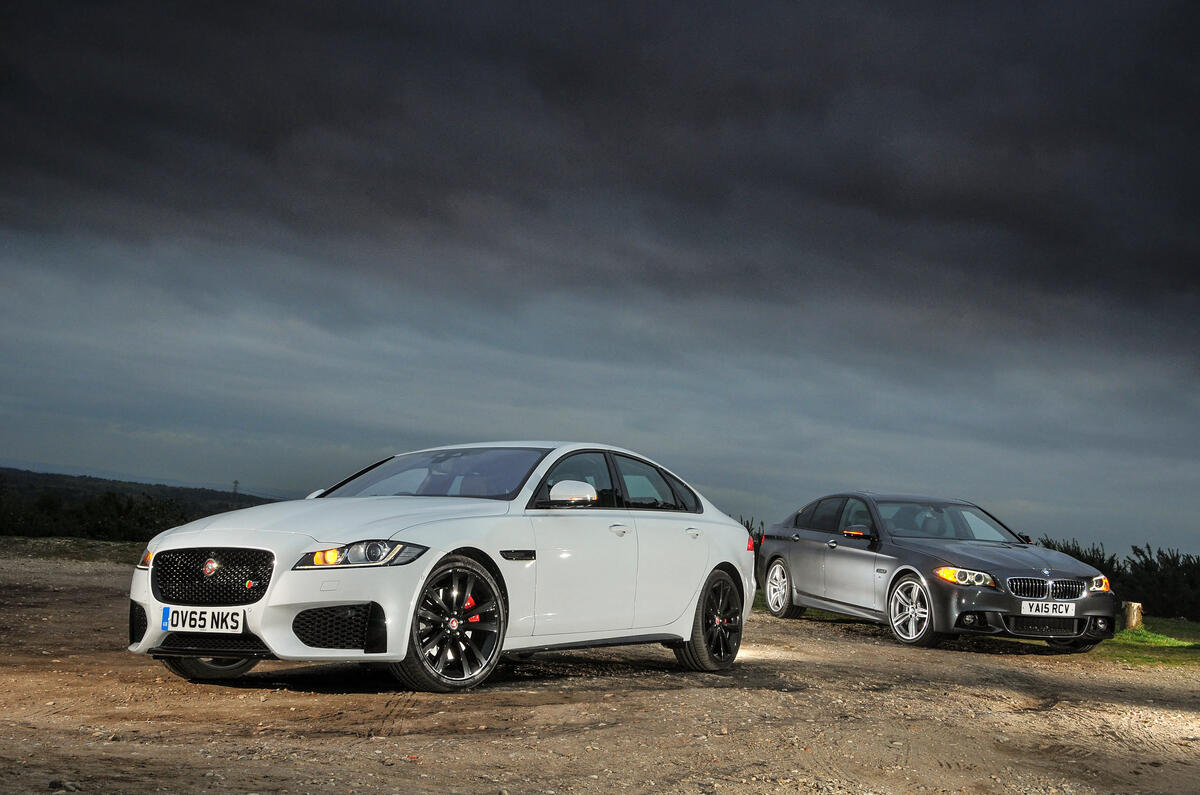
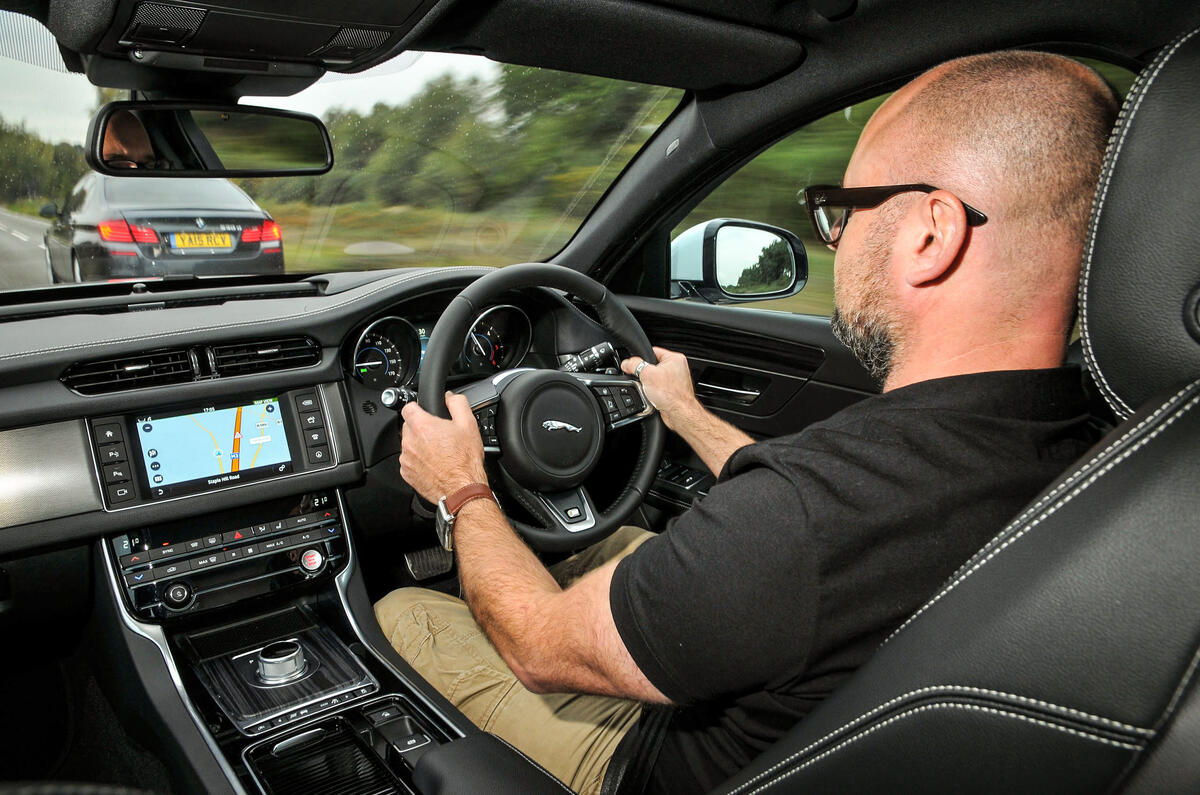

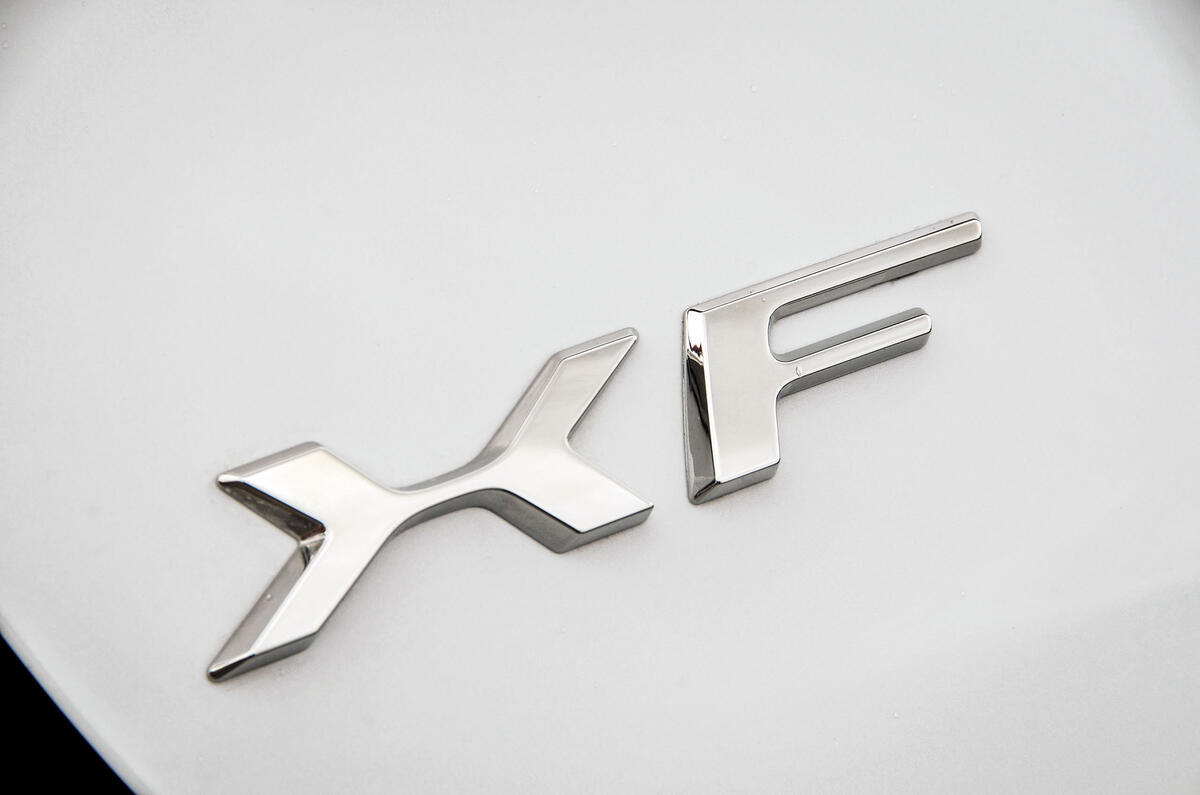

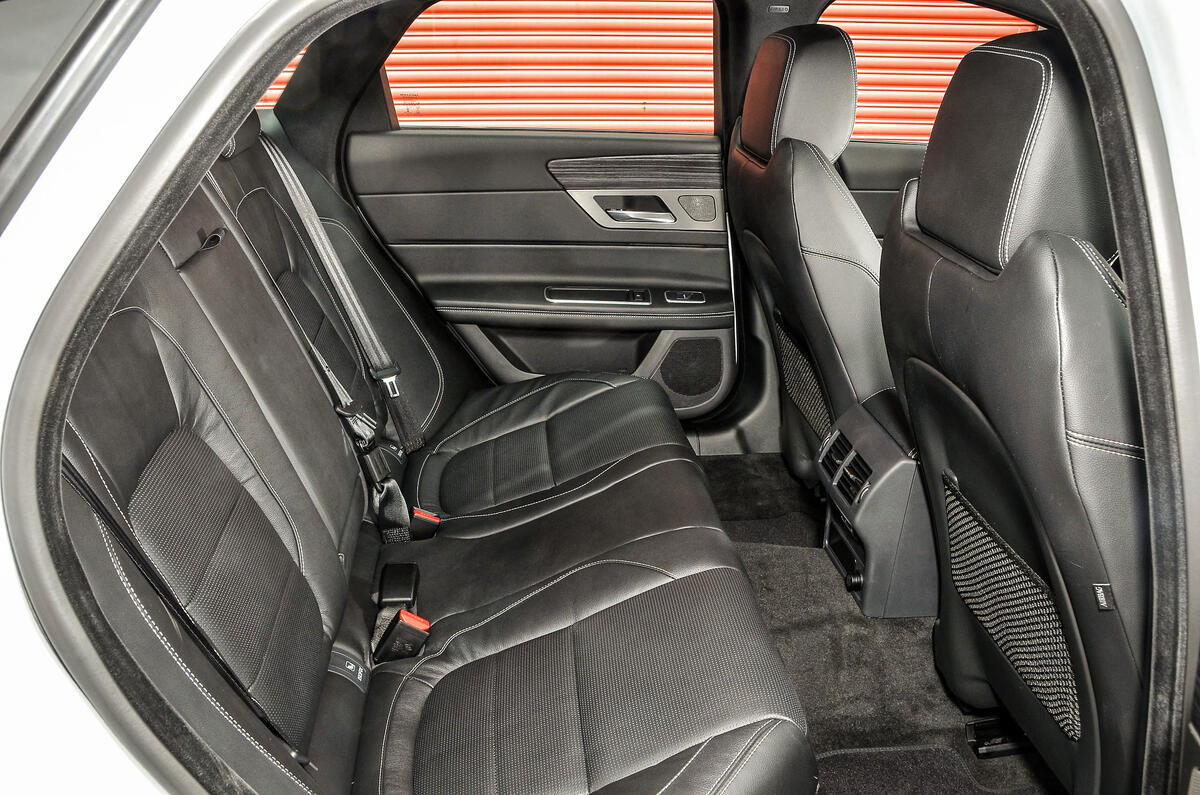
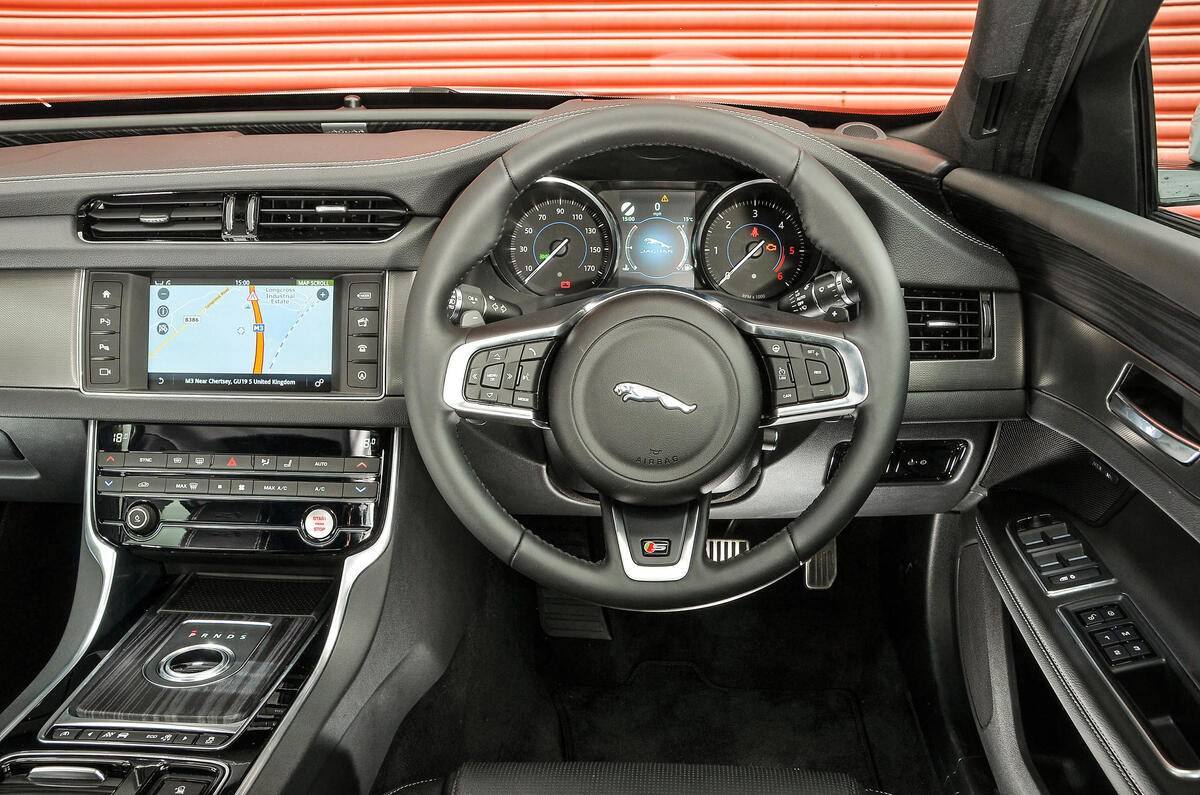
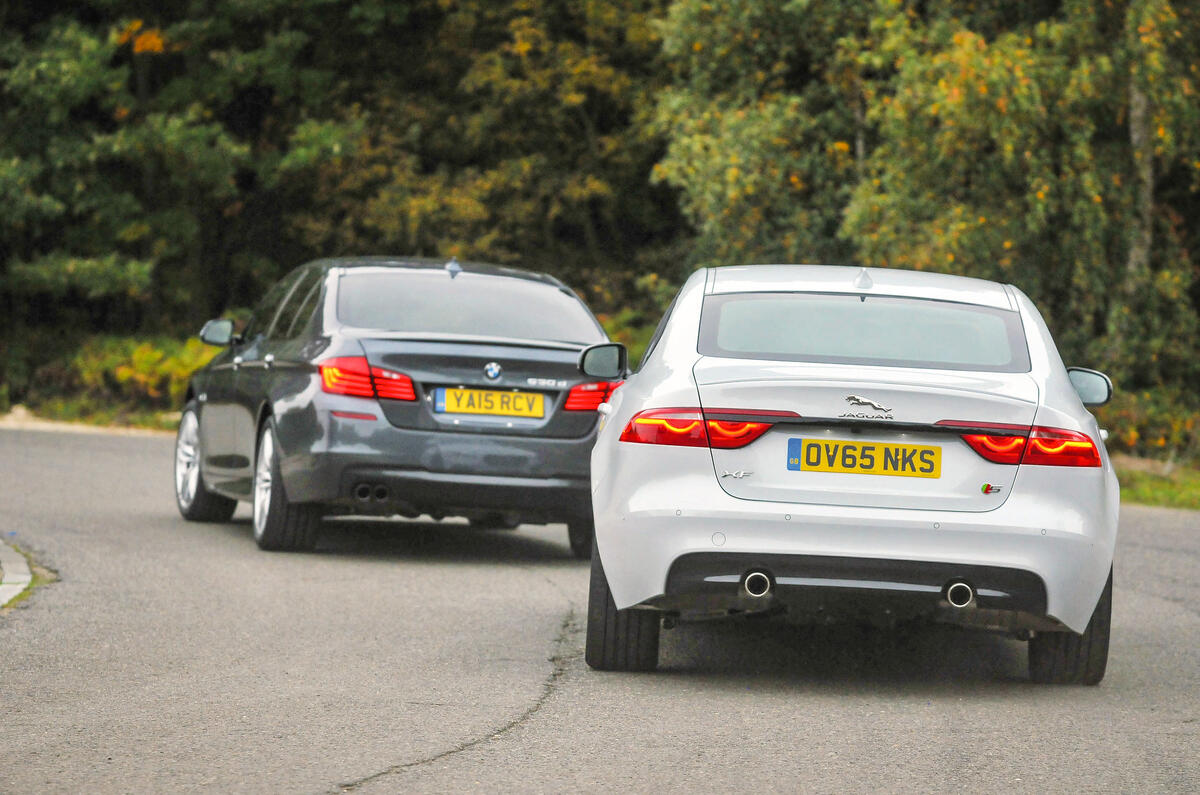
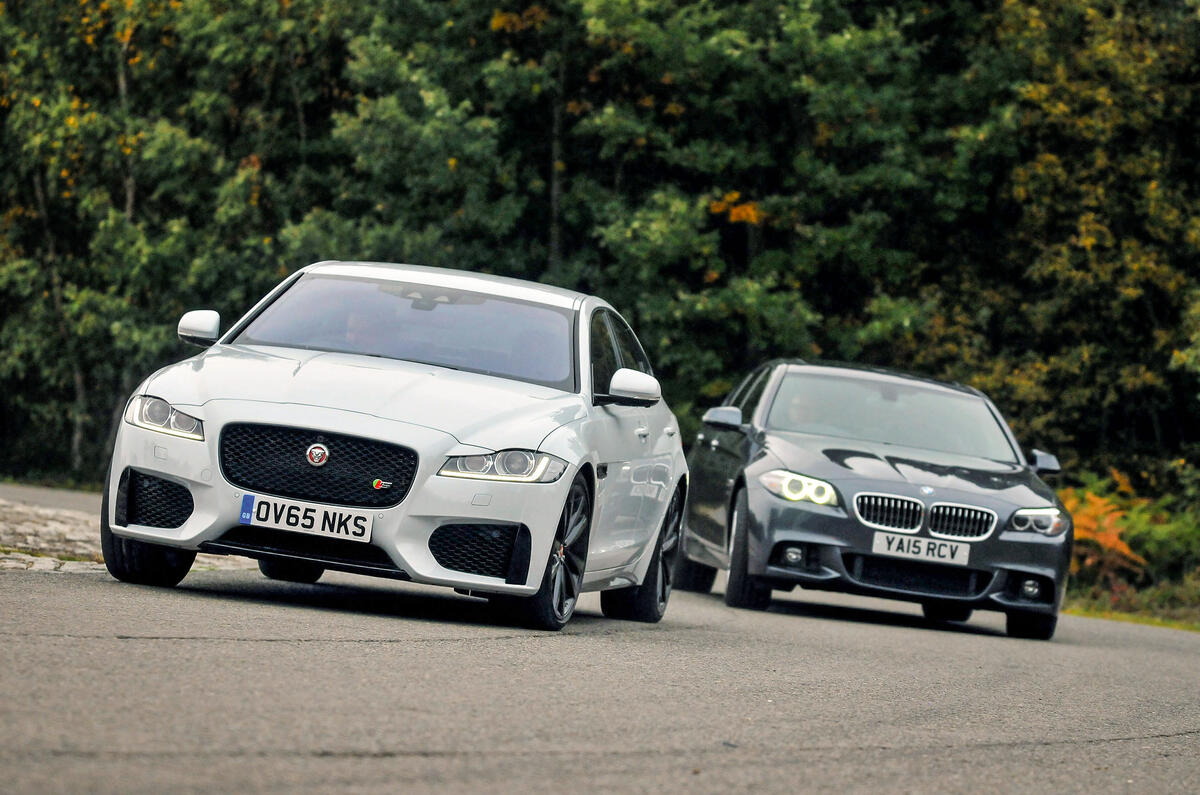
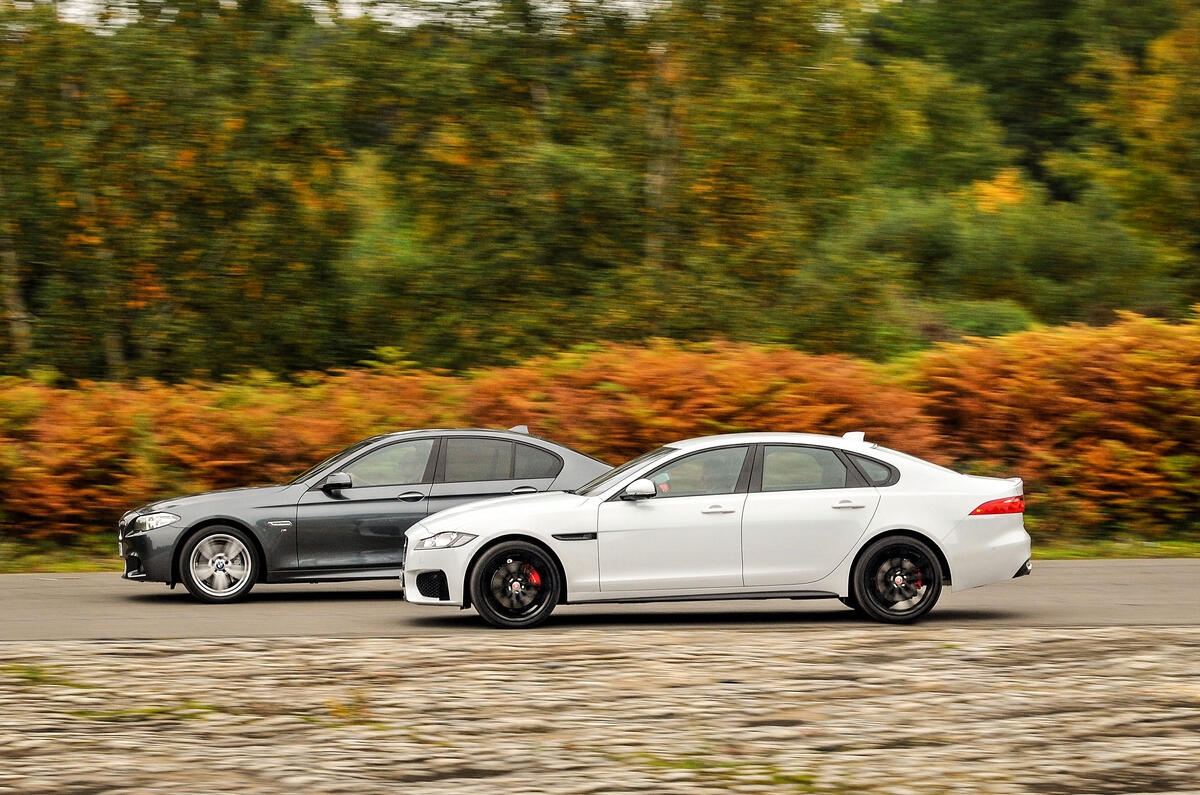
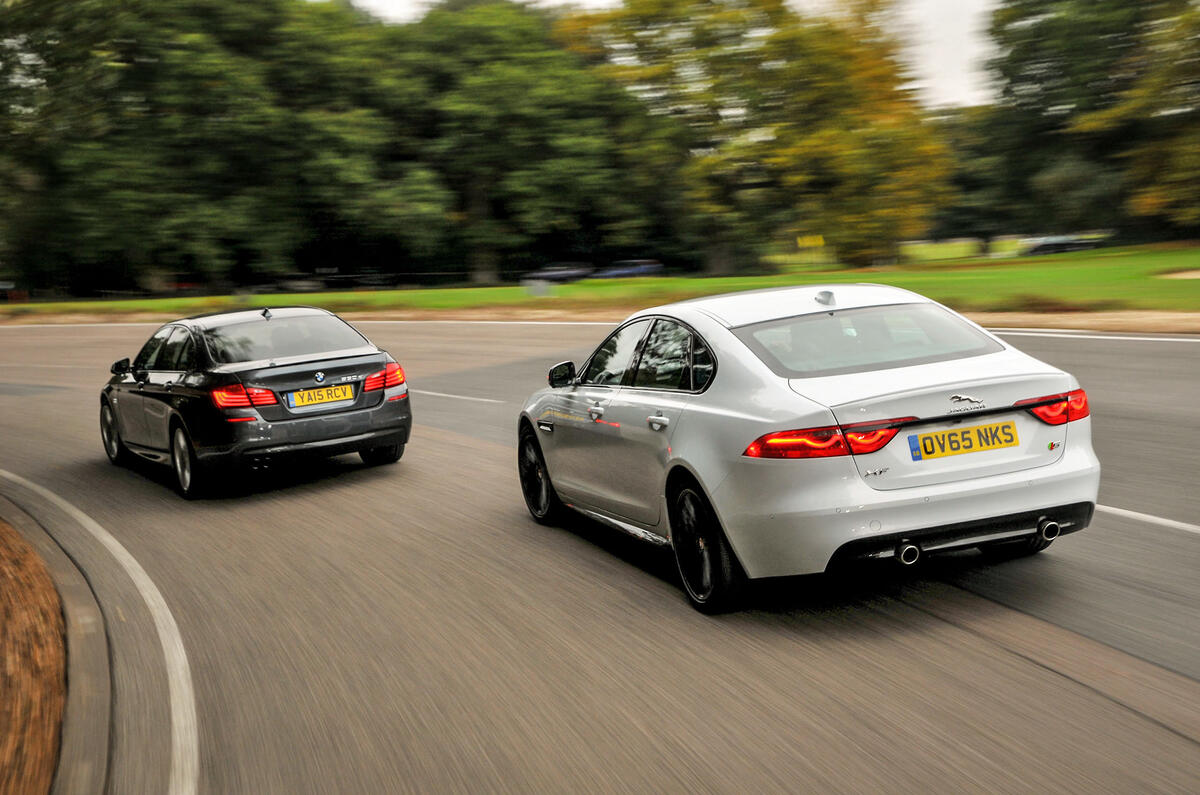
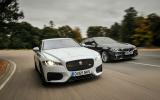
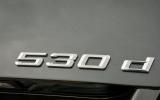
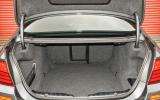

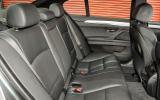
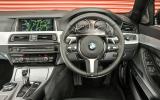
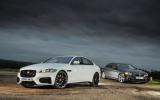

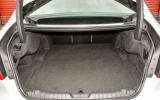



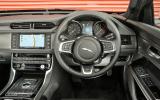
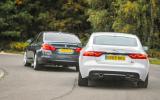
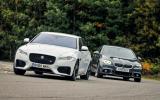
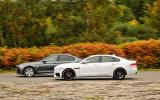
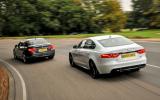






Join the debate
Add your comment
I think the BMW will still be
Rear end
Jaguar has a long way to go